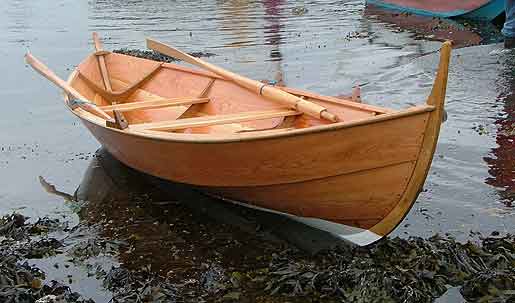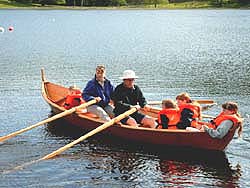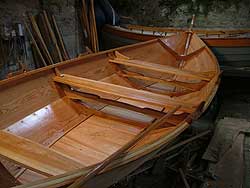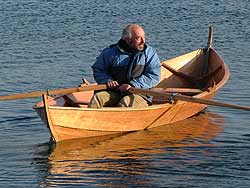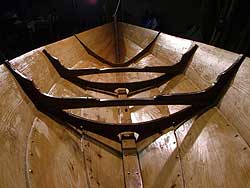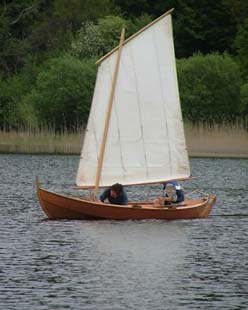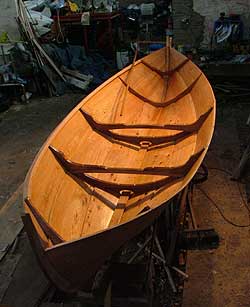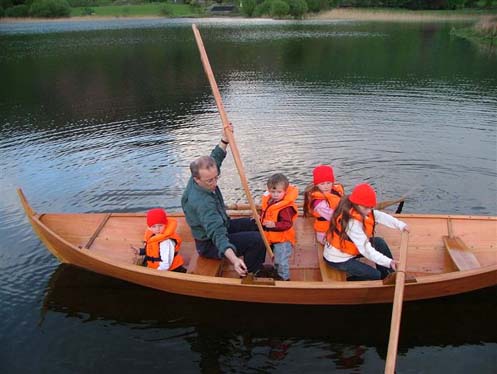| Faering
Project |
Iain Oughtred drew this 15ft faering from extensive research in Norway. Woodfish is basically a traditionally constructed version of his plywood Elf, but redrawn for solid timber, larch in this case. She is his 100th design. She was built over the winter of 2005/6 from locally sourced larch and oak. She differs in many subtle ways from her epoxy/ply sister, in particular the centreline which employs solid oak, scarphed in the traditional way at stem, stern and at the keel. She is copper fastened using rose head nails. It would have been nice to have built her using the old Norwegian methods which dispense with moulds, relying on eye and hand and carefully measured sticks from the roof beams of the building shed to keep the strakes down when planking. Instead moulds were used to define the shape, and at no stage was a hand axe employed (let alone to cut the scarphs...) The commission was for an industrial archaeologist from Sussex, to be used on the East Coast rivers to teach his children to row and sail. She carries a balanced lug rig, and is rowed the traditional way using kabes for oarlocks and distinctive faering oars, held in place by rope bands. She has no centreplate, although Iain has drawn one should you wish to improve upwind performance. The faering has been built in the same way for nearly a thousand years, and with many local variations was the workhorse of the Norwegian coastal communities, cut off by mountains from the nearest towns. The three plank design is very efficient in the use of timber, and has minimal stiffening. The distinctive framing used grown crooks, but here knees have been employed to spread the load. A modern sealer/varnish was used to finish her as opposed to pine tar. Below the waterline she is painted white to set off the larch topsides. The faering was delivered without sails for around £3,500. Sails were made by North Sea Sails in Essex. Oars and all spars were made by Viking Boats.
|
| |||||||||||||
